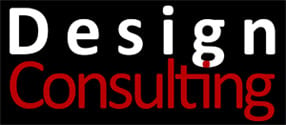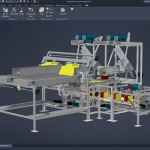AutoCAD Mechanical Training Essentials Course
Autodesk AutoCAD Mechanical Training Essentials Course
Course Length: 16-Hours
- 8-Hours – 2 x 4-hour training sessions and basic setup
- Remote training over MS Teams
- Sessions are recorded and download links for each session are provide for future use
- Training for up to 1-3 People
- Sessions can start within 7 days upon ordering
- Flexible sessions (i.e. consecutive or Monday, Wednesday, Friday, etc.)
- Courses are private and topics can be customised to suit
- Includes Certificate of Completion
- Training manuals are additional $159 each for soft copy
The AutoCAD Mechanical Essentials training course teaches students about the indispensable core topics required to use the AutoCAD® Mechanical software. Through a hands-on, practice-intensive curriculum, students acquire the knowledge needed to accelerate the mechanical design process.
With specific tools for creating and manipulating geometry, automatically acquiring bills of materials, generating mechanical components, and performing design calculations, the AutoCAD Mechanical software offers significant productivity gains that the student learns to maximise.
Topics Covered:
- Identify the main interface elements, their setup and what Help information is available, and to create and use drawing template files.
- Describe the object property management system in which layers are configured and the tools for manipulating layers.
- Describe the workflows for organizing drawing geometry and create a Mechanical structure in a drawing by creating components, component views, and folders.
- Describe the core mechanical design tools of rectangle, hatch, fillet, chamfer, holes, slots, and threads and how to use them to create and modify geometry in your drawings.
- Modify and edit drawing objects by creating multiple offset copies, scaling them with separate values for the X and Y direction, or using a power command.
- Insert industry standard parts into your assembly designs.
- Create production-ready drawings in model space and layouts of structured and non-structured geometry and insert title blocks and borders.
- Notate a drawing through the creation and editing of dimensions, hole charts, fits lists, and mechanical symbols.
Explain how to create and edit a bill of materials, parts list, and balloons.
- Describe the tools that you can use to verify whether or not the standard parts or custom parts within your design meet or exceed the requirements for operational use.
- Exchange data between CAD systems in the form of Mechanical DWG™ and IGES files and create Mechanical drawings using Inventor Link.
- Create a custom drafting standard and drawing template that includes the configuration settings for layers, object properties, symbols, text, BOMs, parts list, balloons, and other annotation tools.
Prerequisites:
- This course is designed for users who are new to the AutoCAD Mechanical software.
- A basic understanding of mechanical drafting or design.
- A working knowledge of the AutoCAD® software.
- A working knowledge of the Microsoft® Windows® 10 or 11 operating system.
Contents
Chapter 1: Getting Started
- Lesson: Interacting with the User Interface
- Lesson: Common Drawing Setup
Chapter 2: Object Property and Layer Management
- Lesson: Property Management
- Lesson: Layer Control
Chapter 3: Organizing Drawing Geometry
- Lesson: Drawing Creation Workflows and Organization
- Lesson: Structuring Data in Drawings
- Lesson: Reusing and Editing Structured Data
Chapter 4: Tools for Creating Key Geometry
- Lesson: Core Design Tools
- Lesson: Power Snaps
- Lesson: Centerlines
- Lesson: Construction Lines
- Lesson: Designing with Lines
- Lesson: Adding Standard Feature Data for Holes and Slots
Chapter 5: Tools for Manipulating Geometry
- Lesson: Editing Tools
- Lesson: Power Commands
- Lesson: Associative Hide
Chapter 6: Mechanical Part Generators
- Lesson: Standard Parts
- Lesson: Chains and Belts
- Lesson: Shaft Generator
- Lesson: Standard Shaft Parts
- Lesson: Springs
Chapter 7: Creating Drawing Sheets
- Lesson: Model Space Views in Layouts
- Lesson: Creating Drawing Sheets in Model Space
- Lesson: Annotation Views When Using Structure
- Lesson: Title Blocks and Drawing Borders
Chapter 8: Dimensioning and Annotating Drawings
- Lesson: Annotation and Annotation Symbols
- Lesson: Creating Dimensions
- Lesson: Editing Dimensions
- Lesson: Hole Charts and Fits Lists
- Lesson: Revision Lists
Chapter 9: Bill of Materials, Parts Lists, and Balloons
- Lesson: Part References
- Lesson: Bill of Materials
- Lesson: Inserting Parts Lists
- Lesson: Ballooning Parts
Chapter 10: Design Calculations
- Lesson: Design Calculations
Chapter 11: Leveraging Your Existing Data
- Lesson: DWG Files
- Lesson: IGES Files
- Lesson: Model Documentation
Chapter 12: Mechanical Options for the CAD Manager
- Lesson: Standards-Based Design
- Lesson: Configure Layer, Text, and Object Properties
- Lesson: Configure the Annotation Tools
- Lesson: Configure Component Properties, BOMs, Parts Lists, and Balloons
Contact Us
If you would to discuss Autodesk training courses, please contact us by calling on 1800 490 514, by filling out the form or clicking the live chat in the bottom right-hand corner.



 5.4 Rotating Objects
5.4 Rotating Objects